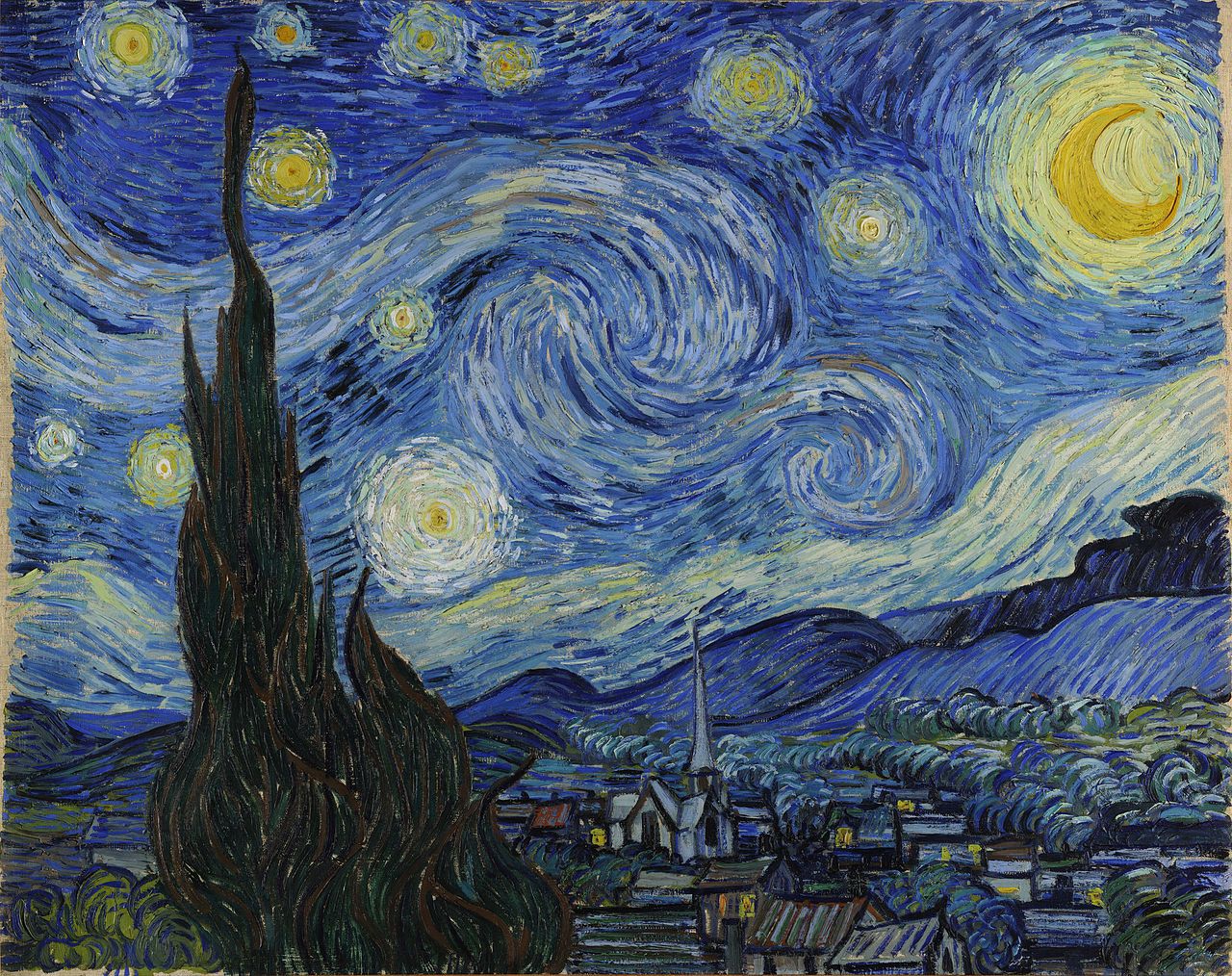Week 7: Neuroscience and Art
The path between neuroscience and art is not that far-fetched. In terms of psychology, this causes it to be deemed a soft science, in contrast to its hard counterpart, neuroscience. Those more comfortable with empirical evidence constantly attempt to measure and standardize the human mind. When in fact, the very nature of the brain its complexity and imaginative capabilities, uniquely to one’s person.
 |
| Vincent Van Gogh's The Starry Night |

Edvard Munch's The Scream
A break from one’s psyche, interestingly enough, leads to one of the greatest production of art. My first thought was Vincent Van Gogh, who suffered from manic depression, among other mental health illnesses. Van Gogh became the hallmark of the post-impressionist period through his bright color blocking technique evident in The Starry Night. Edvard Munch also suffered from psychosis and dealt with auditory and visual hallucinations that led to this creation of The Scream. These artists attempted to cope with their unstable reality by focusing on something they can control, and through that, we can see the world through their eyes.
Moreover, this reminds me of the obsessed artist. Carl Jung created the creator/artist archetype that models the creative vision craving to learn more and perfecting their craft. When turned into the extreme, their shadow takes over, and they struggle to accept what’s before them. Stemming from Jung’s concept of the collective unconscious, the shadow is within our unconscious, where our natural sex and life instincts lay suppressed by societal expectations. Eventually, this leads to instability in their lives and relationships, unable to control their emotional being, so fixated in their art and nothing else. Thus, creating the obsessed artist. The movie Black Swan portrays a technically superior ballerina obsessed with capturing the missing emotional element in their show that her counterpart ballerina propels at. The movie then follows her as she explores her sense of self, causing her to go through psychological breaks, making her a distrustful narrator. The extremely suppressed shadow in her is contrasted with the sexual and experiential libration of her foil. Only until her shadow fully emerges was when she finds the missing element of her performance, perfecting the performance.
A scene from Black Swan with the main character's hallucinations: "Black Swan Nina Sayers Soars"
Ultimately, art is the rawest form of the human mind. I often struggle with engaging with art when I'm clear-headed. I focus on the technically nuanced details instead of immersing myself in just creating. It's only when I'm not mentally well does my brain lets go and lets me just express myself, and I'm able to enjoy my art and be proud of it. So maybe there is something to be said about the mentally ill, obsessed artists.
References
Cherry, Kendra. “The 4 Major Jungian Archetypes.” Verywell Mind, 30 June 2020, www.verywellmind.com/what-are-jungs-4-major-archetypes-2795439#:~:text=In%20Jungian%20psychology%2C%20the%20archetypes,inherit%20instinctive%20patterns%20of%20behavior.
“Creativity and Mental Illness II: The Scream.” Psychology Today, Sussex Publishers, www.psychologytoday.com/us/blog/creative-explorations/201503/creativity-and-mental-illness-ii-the-scream.
P;, Wolf. “Creativity and Chronic Disease. Vincent Van Gogh (1853-1890).” The Western Journal of Medicine, U.S. National Library of Medicine, pubmed.ncbi.nlm.nih.gov/11694494/.
Paulson, Dr. Noelle, and Dr. Noelle Paulson. “Edvard Munch, The Scream.” Smarthistory, smarthistory.org/munch-the-scream/.
Staboymalibu94, director. Black Swan Nina Sayers Soars. YouTube, YouTube, 19 Feb. 2012, www.youtube.com/watch?v=TgIE9OqxyXU&ab_channel=BuddyStewart.
Thugnotes, director. The Hidden Meaning in Black Swan – Earthling Cinema. YouTube, YouTube, 9 June 2018, www.youtube.com/watch?v=X0gh_Te5gNY&ab_channel=Wisecrack.
Uconlineprogram, director. Neuroscience-pt2.Mov. YouTube, YouTube, 17 May 2012, www.youtube.com/watch?v=TFv4owX3MZo&ab_channel=UCOnline.
“Van Gogh Starry Night: Van Gogh Gallery.” Van Gogh Starry Night - The Painting and The Story, www.vangoghgallery.com/painting/starry-night.html.
I really liked your post! I didn't know Van Gogh used art as a way to cope with depression and other mental health issues. I think art is a really good way to express yourself. I also talked about how art therapy has been used to help people cope with mental health issues.
ReplyDeleteHi Rose! I really liked your connection between mental illness and art. I think that it not only connects to this week's topic in a unique way, but also makes an important observation on a potential artistic pattern. I agree that it feels like there's something to be said about the level of expression our brains are capable of when we are not mentally well. Similar to you and the artists you discussed, I feel the most attune with what I'm creating when I'm not in the greatest mental state. My best friend is a songwriter and he has also noticed that often times his greatest ideas come from a vulnerable/emotional mental state. So maybe in a way not feeling too good mentally allows us to actually tap into our emotions more and express ourselves better.
ReplyDelete